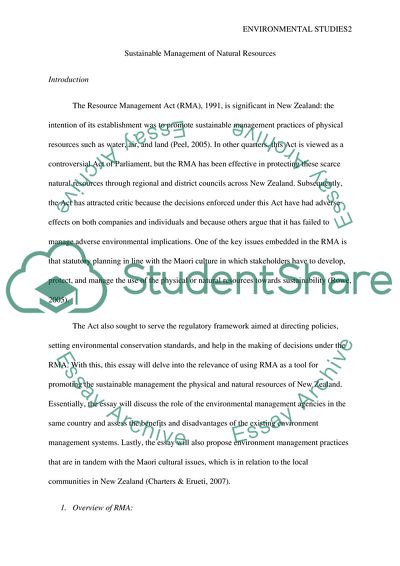Cite this document
(Sustainable Management of Natural Resources Research Paper, n.d.)
Sustainable Management of Natural Resources Research Paper. https://studentshare.org/environmental-studies/1827924-discuss-the-use-of-the-new-zealands-rma-as-a-tool-to-promote-the-sustainable-management-of-new-zealands-natural-and-physical-resources-the-objective-of-the-rma
Sustainable Management of Natural Resources Research Paper. https://studentshare.org/environmental-studies/1827924-discuss-the-use-of-the-new-zealands-rma-as-a-tool-to-promote-the-sustainable-management-of-new-zealands-natural-and-physical-resources-the-objective-of-the-rma
(Sustainable Management of Natural Resources Research Paper)
Sustainable Management of Natural Resources Research Paper. https://studentshare.org/environmental-studies/1827924-discuss-the-use-of-the-new-zealands-rma-as-a-tool-to-promote-the-sustainable-management-of-new-zealands-natural-and-physical-resources-the-objective-of-the-rma.
Sustainable Management of Natural Resources Research Paper. https://studentshare.org/environmental-studies/1827924-discuss-the-use-of-the-new-zealands-rma-as-a-tool-to-promote-the-sustainable-management-of-new-zealands-natural-and-physical-resources-the-objective-of-the-rma.
“Sustainable Management of Natural Resources Research Paper”. https://studentshare.org/environmental-studies/1827924-discuss-the-use-of-the-new-zealands-rma-as-a-tool-to-promote-the-sustainable-management-of-new-zealands-natural-and-physical-resources-the-objective-of-the-rma.


